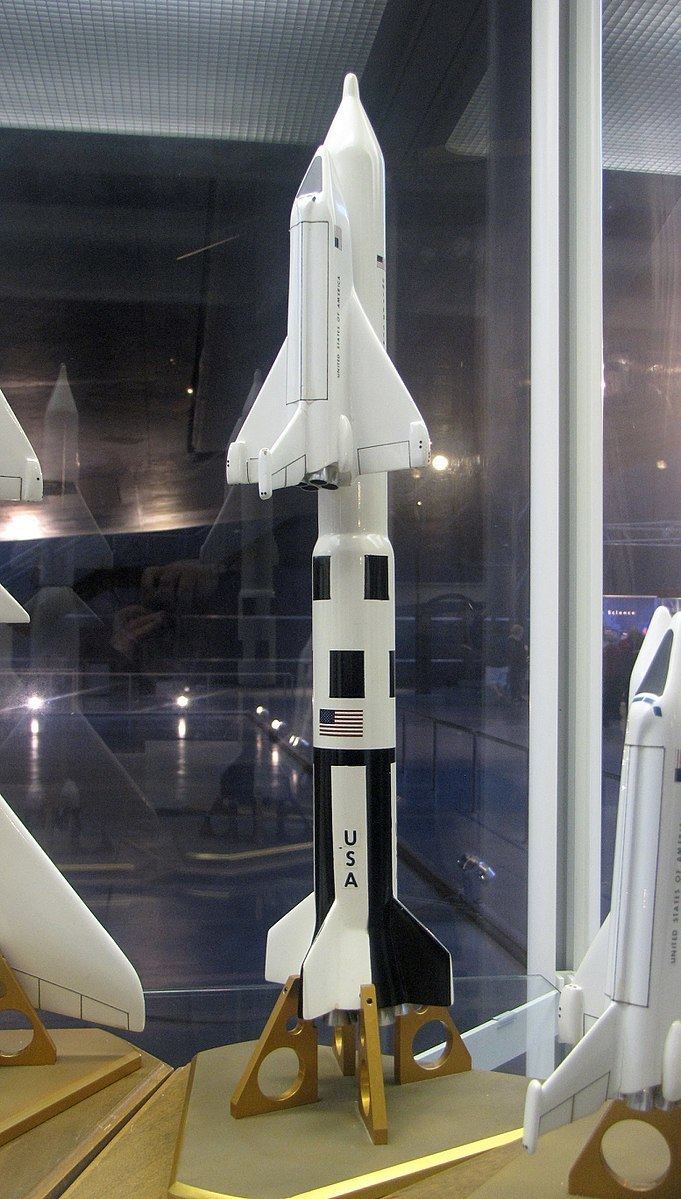Country of origin United States Diameter 10 m (33 ft) | Height 85 m (281 ft) | |
 | ||
Manufacturer Mass 2,304,000 kg (5,070,000 lb) | ||
The Saturn-Shuttle was a preliminary concept of launching the Space Shuttle orbiter using the Saturn V rocket.
An interstage would be fitted on top of the S-IC stage to support the external tank in the space occupied by the S-II stage in the Saturn V, so that NASA would have been able to steer completely away from solid rockets.
The addition of wings on the S-IC stage would allow the booster to fly back to the Kennedy Space Center, where technicians would then refurbish the booster (by replacing only the five F-1 engines and reusing the tanks and other hardware for later flights).
The Shuttle would handle space station logistics, while Saturn V would launch components. This would have allowed the International Space Station, using a Skylab or Mir configuration with both U.S. and Russian docking ports, to have been lifted with just a handful of launches. The Saturn-Shuttle concept also would have eliminated the Space shuttle solid rocket boosters that ultimately precipitated the Space Shuttle Challenger accident in 1986.
Performance
Because the shuttle orbiter would be riding piggyback on the external tank, and the need to prevent damage to the delicate thermal protection tiles, the five-engine variant of the Saturn-Shuttle would require the center engine to be shut down 45 to 50 seconds after launch, while two of the outboard engines would have to be shut down prior to staging. Once the S-IC was jettisoned, the three onboard high-energy Space Shuttle Main Engines would then propel the orbiter into LEO, shutting down 6.5 minutes after ignition. The external tank would then be jettisoned, as on the actually flown shuttle configuration, and the orbiter would then perform its mission.
But because of the need to keep costs down and to allow President Richard Nixon to approve the shuttle program in 1972, NASA decided to utilize segmented solid rocket boosters similar to those used on the Titan III rocket instead of the S-IC, thus ending the Saturn program after the initial Saturn V order was completed.
